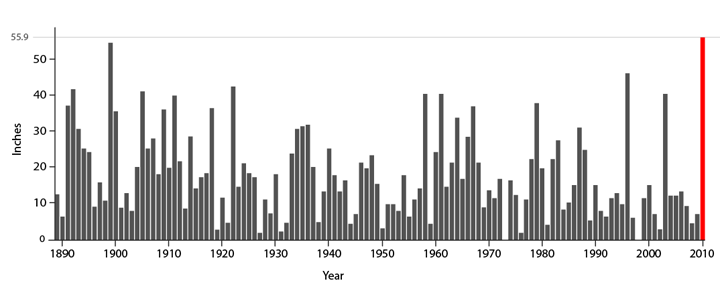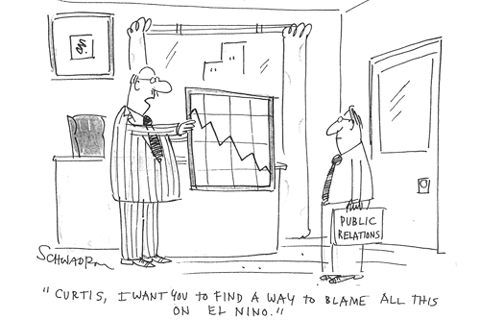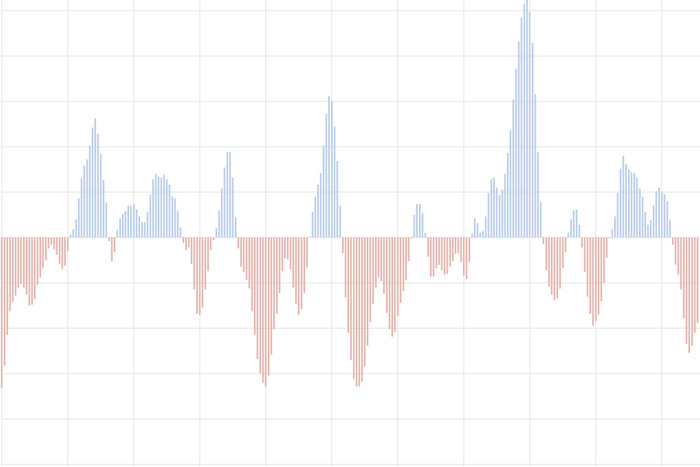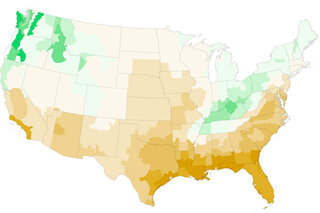
Capping off the warmest decade on record, the average global temperature in 2010 tied 2005 as the warmest year since reliable records began in 1880.

NOAA's Climate Scene Investigators analyzed why the mid-Atlantic region had record-setting snowstorms this winter. The team looked for but found no human "fingerprints" on the severe weather. Instead, they fingered two naturally occurring climate patterns as co-conspirators in the case.

Almost two months after a devastating earthquake rocked Haiti, nearly half a million people there are displaced from their homes, and a million more are living without proper shelter. What climate-related risks will they face in the coming months?

NOAA researchers have built a "time machine" for weather that provides detailed snapshots of the global atmosphere from 1891 to 2008. The system's ability to "hindcast" past weather events is emerging as a powerful new tool for detecting and quantifying climate change.

For years, people have been pointing to El Niño as the culprit behind floods, droughts, famines, economic failures, and record-breaking global heat. Can a single climate phenomenon really cause all these events? Is the world just a step away from disaster when El Niño conditions develop?

The Southern Oscillation Index tracks differences in air pressure between the eastern and western sides of the tropical Pacific.

The Oceanic Nino Index tracks the sea surface temperature in the east-central tropical Pacific Ocean. It is NOAA's primary indicator of the climate patterns known as El Niño and La Niña.
Officially, the ocean is lagging, but the tropical atmosphere is already looking La Niña-like.

